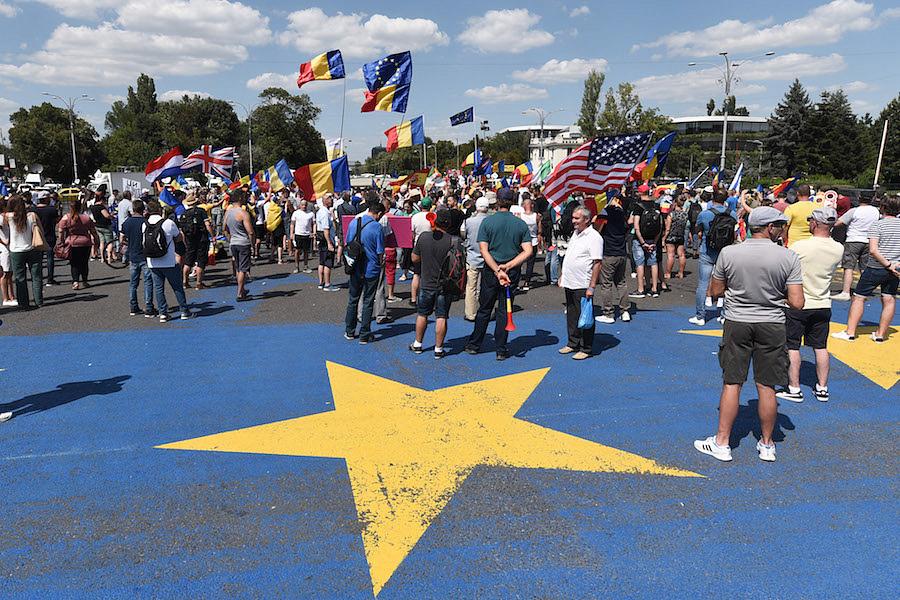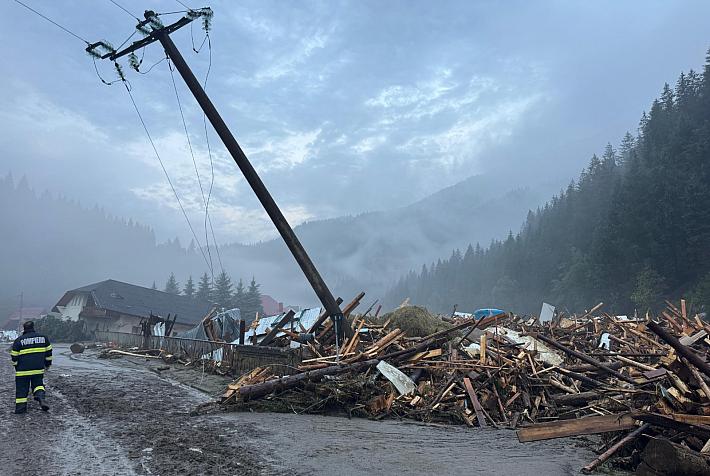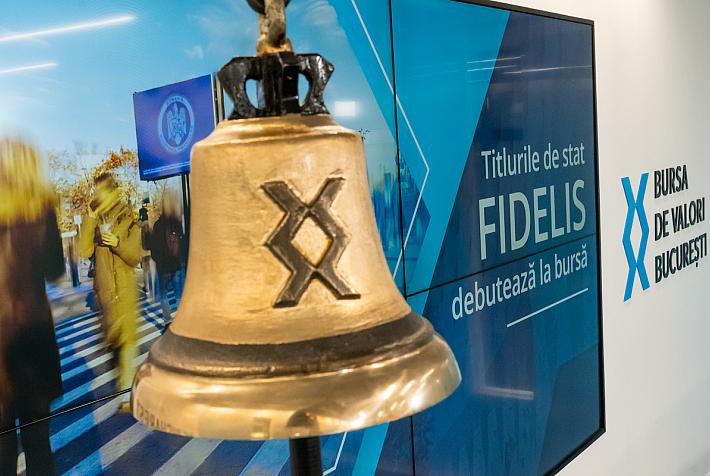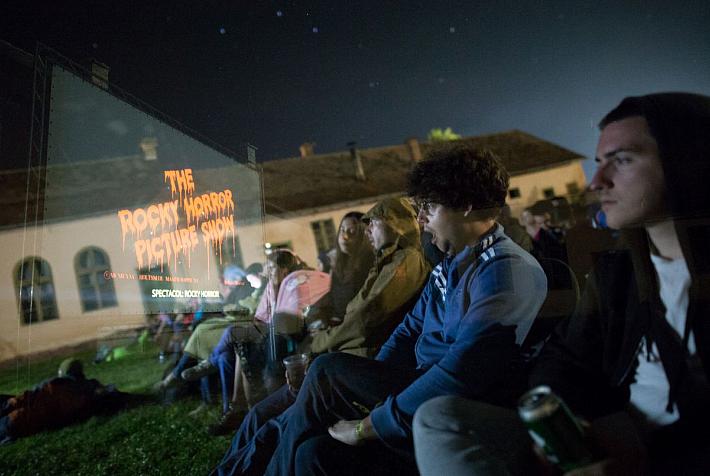Year in review: How Romania has changed in 2018

The year that Romania celebrated the 100th anniversary since the 1918 Union saw continued protests over the ruling coalition's plan to bring changes to the justice laws. Romanians were called to vote in a referendum aiming to change the definition of the family in the Constitution and a mammoth cathedral was consecrated in the capital. Meanwhile, municipalities across the country formed alliances to work on regional development.
The changes to the justice laws
This year, the Parliament passed in revised form the three laws concerning justice, initially adopted at the end of last year. The laws had to be revised after the Constitutional Court ruled that some of the provisions were unconstitutional.
Some of the most important changes were brought to the law on the status of magistrates. The president is completely removed from the procedure to appoint the president, vice president and section heads at the High Court of Cassation and Justice, Romania’s highest court. The appointment will instead be made by the Judge Section within the Superior Magistracy Council (CSM), which will also have the power to revoke the supreme court heads.
Later, in October, the Government adopted an emergency ordinance (OUG) that brings several changes to the three justice laws adopted by the Parliament and promulgated by president Klaus Iohannis. The increases the years of experience needed by those who will be appointed to run the top prosecution offices in Romania, such as the Prosecutor General, the chief prosecutors of the National Anticorruption Department (DNA) and the anti-organized crime directorate DIICOT.
The laws were met with intense local and international criticism. Besides the street protests that continued throughout Romania, the community of magistrates protested several times. In May, more than 900 Romanian magistrates signed a “resolution for defending the rule of law.”
After the Venice Commission warned that Romania’s justice reform weakens the fight against corruption and other crimes, the European Commission said in its latest Cooperation and Verification Mechanism (CVM) report that Romania reversed the progress of its judicial reform and the fight against corruption. It backtracked on the issues of judicial independence, judicial reform and tackling high-level corruption, the report said.
Top prosecutors targeted for removal
Romania is ending 2018 with an interim leader for the Anti-Corruption Directorate (DNA) after the popular head prosecutor Laura Codruța Kovesi was dismissed this year. Kovesi, who had been appointed to the post in 2014, sent many top local politicians to court, earning international praise and the support of the local public. She was dismissed at the justice minister’s request and after the ruling coalition’s leaders complaint about DNA’s "abuses". President Klaus Iohannis signed the decree to revoke Kovesi after Romania’s Constitutional Court (CCR) ruled he can't refuse to dismiss her. Iohannis initially refused to dismiss Kovesi. Both PSD leader Liviu Dragnea and ALDE leader Calin Popescu Tariceanu have been targeted by corruption investigations by the DNA. Last month, president Iohannis rejected the justice minister’s proposal to appoint prosecutor Adina Florea as head of the National Anticorruption Directorate (DNA). Anca Jurma is currently serving as interim head of the institution.
The justice minister also requested the dismissal of country’s general prosecutor Augustin Lazăr. Lazăr has been one of the main critics of the ruling coalition’s justice reform. The justice minister argued that in criticizing the he changes to the justice laws and criminal codes, Lazăr didn’t respect the Constitutional Court’s decisions that ruled the respective changes were constitutional. The dismissal request sparked a big scandal after one of the main arguments supporting it turned out to be a name confusion. Lazăr has taken his case to court.
Protests continue, turn violent
In a second year of anti-government protests targeting the justice law changes and other policies, the protest of August 10 in Bucharest goes down as unexpectedly violent. The protest brought together many Romanian working and living abroad, as well as local residents, to show their discontent with the policies of the ruling coalition’s government. But what started as a usual, peaceful gathering, ended with over 240 people hurt in clashes with the Riot Police. The Gendarmes used tear gas and water cannons to disperse the protesters and social media videos showed them going after peaceful protesters, who were holding their arms up. A camera operator of the Austrian public television operator ORF was beaten by the riot police, while several Israeli tourists were given the same treatment. Over 650 people filed complaints after the incidents. While President Iohannis pointed to the PSD government which “gassed and beat Romanians”, PM Dăncilă spoke of the protest as an assault on the state institutions, while Liviu Dragnea alleged a possible external financing of it.
Anti-EU rhetoric surfaces
In June, the capital's Piața Victoriei, the usual gathering spot of protesters, accommodated a rally of the ruling PSD - ALDE coalition against the "shadow state"which the PSD leaders blame for what they see as abuses of the local justice system. Some 150,000 people were brought to Bucharest from all over the country for the rally. In a TV interview in June, Liviu Dragnea spoke of how Romania’s foreign partners, including the EU, should take responsibility for “encouraging and partially financing this shadow state”.
After Romania received a negative CVM report, stating that it reversed the progress in the fight against corruption, various members of the ruling PSD – ALDE coalition became more vocal on pointing to an “unfair” treatment of the EU towards Romania. Prime minister Viorica Dancila said she was “disappointed and outraged” by the report and the fact that the EC didn’t take into account Romania’s arguments, while Senate president Calin Popescu-Tariceanu spoke about an “unjustified political approach” in the report. Social Democrat MP Florin Iordache said that PSD won’t back down on its justice reform regardless of what the European Commission. He made the statement in a speech in Parliament, which he ended by holding up his middle fingers in the direction of the opposition’s MPs.
Previously, Daniel Dragomir, a former colonel of the Romanian Intelligence Service (SRI), even founded a political movement called Romania 3.0, supporting the idea of Romania exiting the European Union (EU), the Roexit.
More recently, Liviu Dragnea delivered a strongly nationalistic speech, arguing that Romania was tricked with the CVM, and alleging a double standard of the EU. The speech also continued along the line of PSD’s rhetoric against multinationals, banks and pension fund managers. After accusing last year foreign companies of supporting the anti-government protests, he now targeted the “banking greed” and asked the Government to take measure about it. Two days later the finance minister announced a so-called “tax on greed” for banks, to be decided on a quarterly basis based on the average level of the interest rates on the interbank market (ROBOR).
Migration levels reflect in workforce shortage
The reality of Romania's shrinking population continued to be a challenge for employers this year as well. And the statistics released this year do not read more encouraging. Over 621,000 Romanians left the country between 2015 and 2017 and two thirds of them are under 35 years old, according to data from the National Statistics Institute (INS). In 2017, over 219,000 Romanians established their residence abroad, 11,700 more compared to 2016. The top destination countries were UK (23% of those who emigrated in 2017 went to UK), Italy (20.1%), Spain (13.5%) and Germany (13.2%). Furthermore, 21% of Romanians living in urban areas plan to emigrate in the next two years.
A report of the National Bank of Romania (BNR) said that almost 20% of the Romanians aged 20 to 64 years old, the main target of the labor market, were residing in another EU country in 2017. The percentage is the highest among all 28 EU member states.
With this, the country continued to lose personnel in many areas. The healthcare sector remained one of the most challenged ones. For instance, some 78% of employees in Romania’s healthcare system questioned in an official survey this year, namely 83.7% of the doctors and 74.4% of the nurses, said they considered at least once leaving the country to work abroad. A total 58,600 doctors were working in Romania’s healthcare system in 2017, a slight increase compared to 2016, when there were 57,300 doctors.
Similarly, the construction and HORECA sectors struggled with a deficit of available staff and started employing people from outside of EU. While Romania continued to send workers to UK or Germany, the Government decided to double the number of permanent non-EU workers that could be hired in Romania in 2018, and raise the minimum wage and grant several other facilities in the construction sector. Local construction companies have been hiring workers from Asia in recent years to compensate for the lack of local workforce. Meanwhile, local restaurants are expected to employ more than 10,000 workers from outside the EU within a year, according to estimates of industry representatives.
The education sector did not fare better. Over 6,500 kindergarten, primary school and secondary school teachers have left Romania to work abroad in the last 20 years. The World Bank warned that education is one of Romania's three main challenges, and where there is a need for better and more intelligent investment.
1918 Union Centennial & People's Redemption Cathedral
This year, Romania celebrated 100 years since the Great Union of December 1918, when the provinces of Transylvania, Banat, Crișana, Maramureș, Bessarabia, and Bukovina joined the Romanian Kingdom of the time. After another Government change at the beginning of the year, the third since PSD won the parliamentary elections at the end of 2016, the preparations for the event got delayed, and the department in charge with it got restructured in March.
The Government decided to finance a host of projects marking the Centennial although no flagship one stood out. Many of the projects that received financing were events, ranging from festivals and exhibitions to fairs, galas and theater performances. Several statues were unveiled across the country, and a Monument of Union was inaugurated in Alba Iulia, the place where the Union Proclamation was read 100 years ago. The Government decided that projects celebrating the 1918 Union Centennial will be organized throughout 2019 as well, so as to allow the use of the allotted funds after the selection of the projects was delayed.
Another landmark project of this year was the People’s Redemption Cathedral. The mammoth project, which so far required financing of EUR 110 million, was consecrated on November 25. The building, which is not fully completed, has a height of 120 m, 34 m taller than better known Palace of the Parliament (People’s House). The project generated controversy as many argued that the money could have been better spent on needed health, education or road infrastructure.
Another project supported by the Romanian Orthodox Church did not do as well though. A referendum to change the definition of family in the Constitution was invalidated because of the very low turnout. Romanians were called to the polls to vote if they agree to change an article in the Constitution that states that “family is based on the marriage between spouses” to “family is based on the marriage between a man and a woman”. Same-sex marriages are not allowed in Romania, according to the Civil Code, but the supporters of the change said that the notion of marriage needed to be clarified in the Constitution, to avoid a situation in which the Civil Code could be changed. The Church argued the referendum failed because of the unclear question on the ballot, because the event was politicized, but also because it was associated with the Social Democrat leader Liviu Dragnea.
Infrastructure progress?
Two sections of the Sebes-Turda highway in Romania’s Transylvania region opened for traffic this year. The two sections have a total length of almost 29 kilometers and connect the towns of Aiud and Turda, in Transylvania. The total cost for these two sections amounted to some EUR 193 million. A 9.6 km segment of the Transylvania highway, between Gilău and Nădăşelu, opened in September, and another 10 km segment between Ungheni and Ogra, was ready in October.
Regional initiatives target development
The end of 2018 saw the emergence of several initiatives aimed at regional development, with a focus on attracting EU funding The first one was the Alliance of the West, including the cities of Cluj-Napoca, Arad, Oradea and Timișoara. The Northern Transylvania Province association was announced next, covering several municipalities and county councils in the counties of Maramureş, Satu Mare, Sălaj and Bistriţa-Năsăud. A third one is Moldavia Develops association, made up of the municipalities of Iaşi, Botoşani, Piatra Neamţ, Suceava, Câmpulung Moldovenesc, Vatra Dornei, and Roman.
The associations in Transylvania include cities that have already done well in attracting EU funding for their local projects. It is, for instance, the case of Oradea, which recently announced EU-funded infrastructure projects of EUR 80 million, or of Cluj-Napoca, the only Romanian city among 22 European ones to get EUR 92 million worth of funds from the European Regional Development Fund to finance innovative solutions to urban challenges. Cluj-Napoca, already one of the country’s most developed and innovative cities, will get EU funds to develop jobs and skills for the local economy.
All of these initiatives recognize, however, the urgent need to develop country-wide road and rail infrastructure, something that the central authorities have not yet managed to do. Another area where there is room for further improvement is that of EU fund absorption. Romania will absorb, by the end of this year, 25% of the money earmarked for the country under the 2014-2020 European Union (EU) budget, according to estimates by PM Viorica Dancilă. This year, the EC Commissioner for Regional Policy, Corina Cretu, repeatedly criticized the Romanian Government for spending money from the national budget or planning Public Private Partnership (PPP) arrangements instead of absorbing funds from the EU budget.
The unique tax form for freelancers, more fiscal changes
A unique tax form for all Romanians who make revenues from independent activities was introduced mid-March, replacing seven other forms. Based on it, the tax agency determines what taxes and contributions need to be paid. Close to 1 million Romanians were expected to have to fill in the form.
Beginning this year, Romanians also paid lower contributions to the mandatory private pension funds although they were supposed to increase. The association of private pension fund managers in Romania (APAPR) said the cut amounts to 20% lower pensions for future retirees. This came as the Government pondered the option of making the private pension funds optional. In June, the prime minister announced that changing the infrastructure of the local pension system was no longer topical. At the end of the year, the finance minister announced that participants to the mandatory private pension funds could withdraw after contributing for five years.
Overall, since the beginning of the year, 309 laws, 18 government ordinance, 107 emergency ordinances and 428 government decisions were passed, according to the National Council of Small and Medium Sized Private Enterprises in Romania (CNIPMMR). The council said over 45% of the adopted legislation impacted businesses directly and significantly. The council released the data before the Government announced new taxes in the banking, energy and telecom sectors.
(Opening photo: People gathering in front of the Government building for the August 10 protest; Photo by Inquam Photos/ Alberto Grosescu)
editor@romania-insider.com











